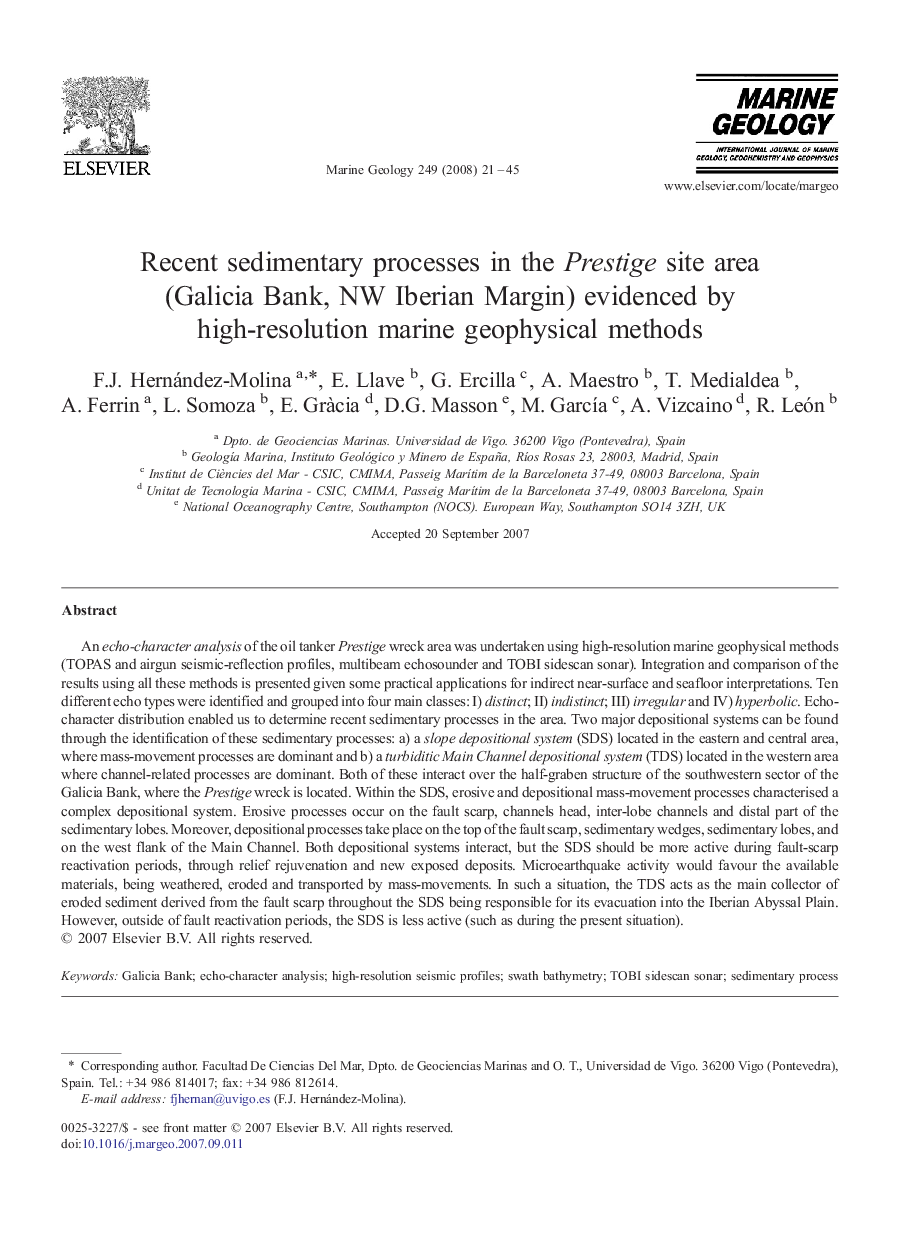| کد مقاله | کد نشریه | سال انتشار | مقاله انگلیسی | نسخه تمام متن |
|---|---|---|---|---|
| 4719324 | 1639184 | 2008 | 25 صفحه PDF | دانلود رایگان |

An echo-character analysis of the oil tanker Prestige wreck area was undertaken using high-resolution marine geophysical methods (TOPAS and airgun seismic-reflection profiles, multibeam echosounder and TOBI sidescan sonar). Integration and comparison of the results using all these methods is presented given some practical applications for indirect near-surface and seafloor interpretations. Ten different echo types were identified and grouped into four main classes: I) distinct; II) indistinct; III) irregular and IV) hyperbolic. Echo-character distribution enabled us to determine recent sedimentary processes in the area. Two major depositional systems can be found through the identification of these sedimentary processes: a) a slope depositional system (SDS) located in the eastern and central area, where mass-movement processes are dominant and b) a turbiditic Main Channel depositional system (TDS) located in the western area where channel-related processes are dominant. Both of these interact over the half-graben structure of the southwestern sector of the Galicia Bank, where the Prestige wreck is located. Within the SDS, erosive and depositional mass-movement processes characterised a complex depositional system. Erosive processes occur on the fault scarp, channels head, inter-lobe channels and distal part of the sedimentary lobes. Moreover, depositional processes take place on the top of the fault scarp, sedimentary wedges, sedimentary lobes, and on the west flank of the Main Channel. Both depositional systems interact, but the SDS should be more active during fault-scarp reactivation periods, through relief rejuvenation and new exposed deposits. Microearthquake activity would favour the available materials, being weathered, eroded and transported by mass-movements. In such a situation, the TDS acts as the main collector of eroded sediment derived from the fault scarp throughout the SDS being responsible for its evacuation into the Iberian Abyssal Plain. However, outside of fault reactivation periods, the SDS is less active (such as during the present situation).
Journal: Marine Geology - Volume 249, Issues 1–2, 11 March 2008, Pages 21–45